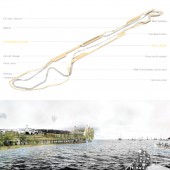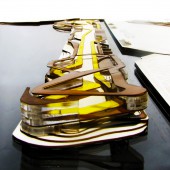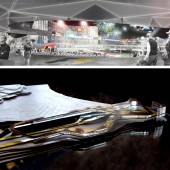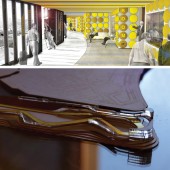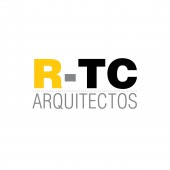1785m International Competition Border Zone by Ruben Tapias Cañas |
Home > Winners > #67923 |
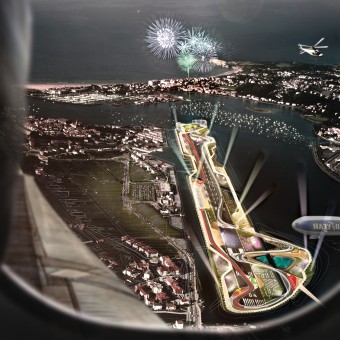 |
|
||||
| DESIGN DETAILS | |||||
| DESIGN NAME: 1785m PRIMARY FUNCTION: International Competition Border Zone INSPIRATION: The project was born as a local reaction to a highly invasive pre-existing airport infrastructure and also as a global reaction to an equally invasive sun and beach tourism that floods the Spanish coasts every summer. It is an integrated infrastructure in the economic, social and environmental environment that addresses new tourism dynamics capable of producing a positive and prolonged impact on its environment without resorting to the spanish tourist standard of sun and beach. UNIQUE PROPERTIES / PROJECT DESCRIPTION: 1785m is an urban infrastructure situated on the Bidasoa river estuary (France-Spain border), which suggests tourism as a catalyst for economic, social and environmental change in the region. A project capable of managing and mobilizing a Glocal network, that allows to implement a sustainable format of tourism acting as a powerful experience gatherer, capable of offering that hybrid and complex leisure offer that works as a point of attraction for both local and global tourism. OPERATION / FLOW / INTERACTION: The old airport is converted into an international island conceived for speed competitions, a space fitted with water channels for competitions such as rowing, sailing, etc. Indoor and open-air pools, hangars for gliding, a runway 1km long for small planes. A multi-use track for go karting, cycling or skating, and a 4000m track with FIA approval. 1785m has a big offer of events and activities all year long. A space in which people and vehicles, technology and nature, production and consumption all combine in an own personal architectural language, based on coherence, reality and order. PROJECT DURATION AND LOCATION: The project started in January 2014 in the Spain-Frnace border (mouth of the Bidaosa river) and finished in June 2014 in Segovia (Spain). |
PRODUCTION / REALIZATION TECHNOLOGY: The opening of new channels to free the river flows, generates 227.500m3 of aggregates. These aggregates are reused in the creation of new topographies; providing strategical watchtowers in terms of visuals, hills of expectation over the competition areas and slopes to protect urban areas acoustically. In the northern part of the platform program and speed bands emerge above ground to form elevated surfaces in which the main program of the project will be located. These bands are colonized by lightweight construction systems, following a strategy of supporting or unhang. SPECIFICATIONS / TECHNICAL PROPERTIES: The big platform that contains the project is 1785m long and 29m width. This platform is first colonized with the implantation of two bands: a speed band and a programmatic band. Later, the programmatic band is turned into building through 106 Reinforced concrete frames with maximum spans of 12m, 5 types of curves and several straights, 1 Interior skin simulating the vehicles path. The plotting of this skin generates gaps which are now converted into closed spaces through 120 Lightweight metal frames, with maximum spans of 7,20m. In this way, the band is turned into a continuous pedestrian circulation full of program. TAGS: Urban design, Urban planning, Urbanism, Architecture, Tourism, Design, Big scale, Infrastructure, Sports, Racetrack RESEARCH ABSTRACT: Tourism is no longer an industry of space but one of time. The person seeking leisure in general, looks for the largest number of successful experiences that can accumulate over a determined period, and in this respect, traditional spaces like sports halls or the competition race-track have nothing new to offer. We are now in the time of change, where such spaces are reinvented to offer a broad portfolio of possible experiences in a small space-time lapse. Spaces such as the Dallas Cowboys Stadium, are now posing a new range of hybrid entertainment, where sports are just one more ingredient. CHALLENGE: 1785m of virgin platform is the legacy of a failed airport. A space in conflict with the nearby and higher airport of Biarritz and currently rejected by the three adjacent cities due its invasive nature. It is proposed the substitution of an infrastructure with global influence like an airport, for another infrastructure also with global influence like a cross-border space of competition. The hardest part was the reinvention of a very singular space, into another space also with a very singular nature, but now, integrated in the local and global scale and working as a tourism condenser. ADDED DATE: 2018-04-02 12:02:50 TEAM MEMBERS (1) : Rubén Tapias Cañas IMAGE CREDITS: Image #1: Illustrator Rubén Tapias, 1785M, 2014. Image #2: Illustrator Rubén Tapias, 1785M, 2014. Image #3: Photographer Rubén Tapias, 1785M, 2014. Image #4: Photographer/Illustrator Rubén Tapias, 1785M, 2014. Image #5: Photographer/Illustrator Rubén Tapias, 1785M, 2014. |
||||
| Visit the following page to learn more: https://bit.ly/2Hldvc1 | |||||
| AWARD DETAILS | |
 |
1785m International Competition Border Zone by Ruben Tapias Cañas is Winner in Urban Planning and Urban Design Category, 2017 - 2018.· Press Members: Login or Register to request an exclusive interview with Ruben Tapias Cañas. · Click here to register inorder to view the profile and other works by Ruben Tapias Cañas. |
| SOCIAL |
| + Add to Likes / Favorites | Send to My Email | Comment | Testimonials | View Press-Release | Press Kit |

